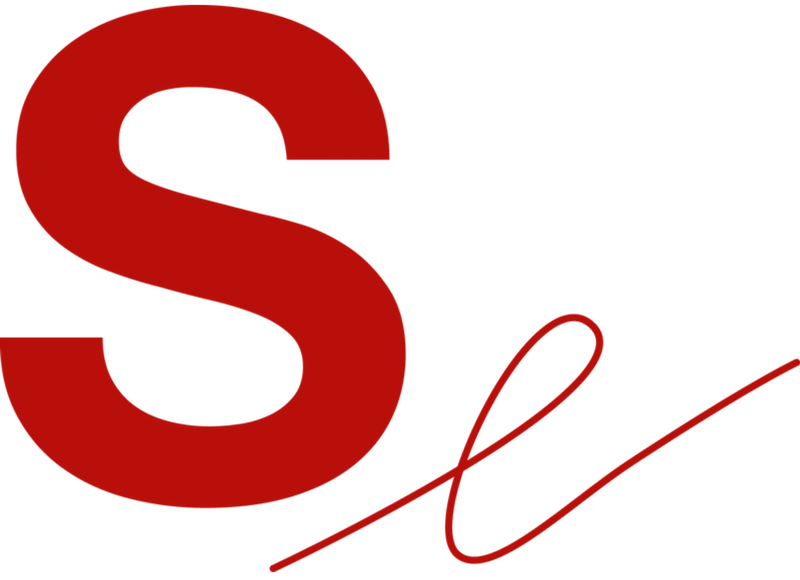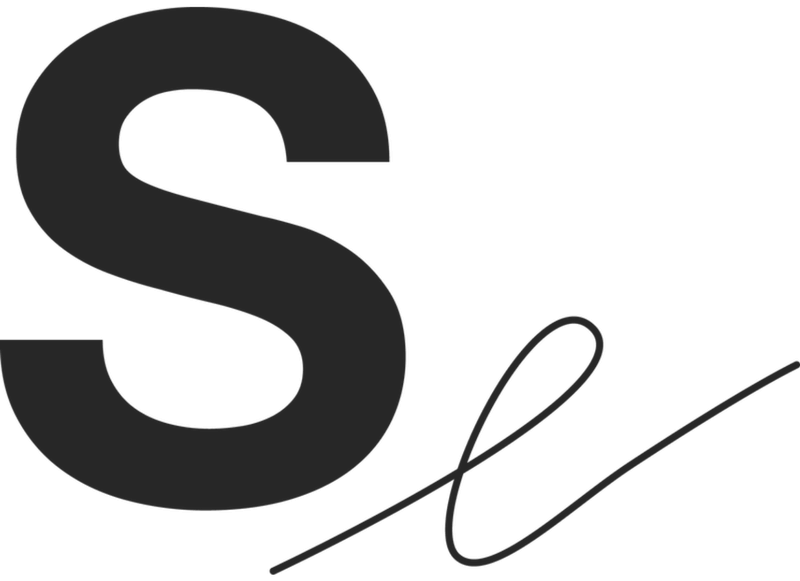THE WEEKENDER
Subscribe today
Big reads and big ideas shaping public policy, consumer trends, and cultural innovation.
October 23, 2020
Curation and commentary from the Team @ Strategic Elements
THE BIG FIVE
The economy’s biggest factor right now: Forget lockdowns, it’s the “demand shock.” Regardless of where you live, what your job is, and whether or not you’re working from home – the pandemic has forced you to deal with some sort of balance between keeping restrictions and opening up the economy. It’s a delicate one, but if you thought that lockdowns are the make-or-break hurdle that’s facing the economy right now, think again. Lockdowns have mostly been lifted across the country, and much of the public health response has evolved to more streamlined safety measures to keep more industries moving. Movie theaters, gyms, and theme parks have all been able to reopen, but the “demand shock” has set in and appears to be the much greater threat. More than just government restrictions, Americans simply aren’t as comfortable as they used to be, and demand across several industries has lowered strikingly as a result. It appears this won’t change until we truly see the light at the end of the pandemic tunnel. Marker
What Spanos was describing is the new reality now facing entire clusters of American businesses — restaurants, movie theaters, airlines, gyms — and the economy more generally: Consumer anxiety over the continued spread of the pandemic is holding back the recovery by making it impossible to get back to business as usual. In the spring, the economy was crushed in large part by the lockdowns and restrictions imposed by states, which created what economists call a supply shock: businesses literally could not supply goods and services, because they were shut down.
But as lockdowns have been lifted in most of the country and businesses have been able to reopen, that supply shock has waned, only for a new problem to emerge: weak demand. In other words, a supply shock has been replaced by a shock to demand.
“Digital upscaling” is accelerating tech training in the economy. Think about how your company’s tech jobs are traditionally organized: You might have an IT person or a digital director, but they are usually in a separate department from everyone else. No more, says the post-COVID 19 economy. The pandemic has caused a fast-forward in the need to train workers in tech support, storage technologies, and digital literacy. LinkedIn and other companies are promoting free training to help make the workforce tech-savvy. Of course, certain tech jobs with key expertise will remain – but it’s clear that the economy can’t afford to have the workforce fall behind in having the ability to learn from anywhere. Reuters
The COVID-19 pandemic pressed the fast-forward button, however, accelerating a tech shift already taking place.
“Since the pandemic started, companies are fast-tracking their embrace of digital technologies,” said Gianni Giacomelli, chief innovation officer at business transformation firm Genpact, and head of innovation design at MIT’s Collective Intelligence Design Lab. “They are enabling people to learn wherever they are, whenever they want, on any device.”
“Before there used to be tech jobs, and non-tech jobs,” said Joe Atkinson, PwC’s chief products and technology officer. “Now there are just ‘jobs’, and everyone needs to have comfort with technology.”
Testing the limits of tech and a potential answer to the “traveling salesperson” problem. If you’re not familiar with this computer science experiment, the traveling salesman problem asks the following question: “Given a list of cities and the distances between each pair of cities, what is the shortest possible route that visits each city exactly once and returns to the origin city?” Finding the shortest possible roundtrip might seem like a fun but harmless exercise, but it’s routinely used to test the limits of computer science and technology. Unlocking the answer to such a problem, which researchers now claim that they have, will give us answers that can be applied to other computations that could fundamentally change how we use technology to improve our livelihoods. Quanta Magazine
After 44 years, there’s finally a better way to find approximate solutions to the notoriously difficult traveling salesperson problem.
This optimization problem, which seeks the shortest (or least expensive) round trip through a collection of cities, has applications ranging from DNA sequencing to ride-sharing logistics. Over the decades, it has inspired many of the most fundamental advances in computer science, helping to illuminate the power of techniques such as linear programming. But researchers have yet to fully explore its possibilities — and not for want of trying.
Over the decades, the traveling salesperson problem has launched many new methods into prominence. Oveis Gharan hopes that it will now play that role for the geometry of polynomials, for which he has become an eager evangelist. In the decade or so since he started learning about this approach, it has helped him prove a wide range of theorems. The tool has “shaped my whole career,” he said.
What about 5G on Earth? The moon is getting a 4G network – here’s why. You’re likely seeing a wealth of ads and promotions talking about the 5G cellular network that we must all upgrade to now. Never mind the fact that 5G, while holding incredible potential, is still years away from full development in the U.S. But outside of our atmosphere, the moon is now slated to get its own 4G cellular network courtesy of NASA. If you’re still having problems with current cell service in your area and are wondering why the moon is getting attention, we wouldn’t blame you. But there’s a good reason for it: NASA wants to sustain a human presence on the moon for important scientific research and technology development, and reliable, long-distance communication must come with it. On the bright side (and not the dark side of the moon), the technology must withstand harsher conditions and could help improve the technology we have here on earth – just like other space technology has. CNN Business
To reach its 2028 goal to build a lunar base and eventually sustain a human presence on the moon, NASA awarded $370 million to over a dozen companies to deploy technology on the lunar surface. Those innovations include remote power generation, cryogenic freezing, robotics, safer landing … and 4G. Because how else will astronauts tweet their moon golf shots and lunar rover selfies?
John Oliver jokes about CNN parent company AT&T (T) aside, 4G will probably work better on the moon than it does here — it won’t have any trees, buildings or TV signals to interfere with the 4G signal. The moon’s cellular network will also be specially designed to withstand the particularities of the lunar surface: extreme temperature, radiation and space’s vacuum. It will also stay functional during lunar landings and launches, even though rockets significantly vibrate the moon’s surface.
Bell Labs said astronauts will use its wireless network for data transmission, controlling of lunar rovers, real-time navigation over lunar geography (think Google Maps for the moon), and streaming of high-definition video. That could give us stuck on Earth a much better shot of astronauts bouncing around on the lunar surface: Buzz Aldrin was a great cameraman, but he didn’t have an iPhone.
Tackling death and addiction head on, and with humor. It’s not hard to lose focus on the country’s (other) crises during the middle of a public health and economic event. Just as the coronavirus has disrupted addiction treatment strategies across the U.S., a growing podcast is tackling serious issues such as the opioid epidemic and suicide with first-person storytelling – and humor. There’s nothing funny of course about tragedies themselves, but in a period of distancing, the “Last Day” is using investigative quests, and personal, candid commentary to help to make listeners feel closer to being able to address a national crisis. Los Angeles Times
“Last Day,” which premiered in September 2019, tackles this national crisis through first-person storytelling. Opening with an on-the-ground re-creation of Stefano’s last day alive in Boston, it then gives way to interviews with his young widow and family — as well as policy experts, rehab specialists, doctors, recovering addicts and an expert in childhood trauma. Wachs treated the narrative as a manic investigative quest.
But they still wanted to ask all of the “wrong” questions, to interrogate conventional beliefs and misinformation. They discovered, for example, that growing research shows trigger warnings can potentially do more harm than good.
Wachs’ funny, acidic tone — combined with “This American Life”-caliber production values including original music by WNYC composer Hannis Brown — keeps the show from waxing pedantic. It gives listeners in bereavement, or struggling with addiction themselves, permission to ask uncomfortable questions, challenge received wisdom and laugh about their pain.
SE INSIGHTS
Margin of Error
With the election just eleven days away, the focus naturally goes to what the polls tell us to expect. The perception that the polls were off in 2016 in not predicting victory for Trump has many nervous about trusting them. The political and media classes were stunned by the results of the election.
Strategic Elements is not a polling firm. We are fortunate, however, to hire and work closely with many talented pollsters from across the political spectrum in helping clients interpret and utilize opinion research. In our review of the sixteen most competitive states in 2016, the head-to-head polls did their job for the most part.
The Real Clear Politics average coming into election night showed the eventual winner of the state as ahead in the polls in eleven of fifteen states. There wasn’t enough polling done in Minnesota to include it in the analysis. In the four states that didn’t have the winner ahead, three of them were inside the average Margin of Error for the polls taken within the period immediately before the election.
What seems to have been lost in the last election cycle is the fact that polls are not 100% accurate.
A poll with +/-3% Margin of Error showing a 50%-50% race means each candidate could be as low as 47% and as high as 53%. Unfortunately, the common view of Margin of Error is that it encompasses collective results instead of each result. Most polls’ methodology state clearly that they are 95% accurate — the Confidence Interval. This means that 1 out of 20 times a survey is fielded, its results will be inaccurate. And by inaccurate, they mean outside the Margin of Error.
Contrary to popular belief, the 2016 presidential polls largely lived up to their billing as being accurate and within the Margin of Error. Fourteen out of fifteen were in the right zone, that’s not bad. Simply put, the commentator/analyst/strategist set let their expectation of the accuracy of polls get out of whack and then did the disservice of passing that unrealistic expectation on to the American public.
Polls have limitations. They are measurements of a snapshot in time. When executed well, they can be informative of how well or poorly candidates and issues are being received by voters. They are really about the tracking of trends within known tendencies. And as any reputable pollster will tell you, one poll does not a trend make.
There are also good polls and bad polls, and sometimes the media and commentators don’t offer much of a distinction. As one of our good friends – a top GOP pollster – says, “polls are a consumer beware proposition, and there is currently too little scrutiny.” The 2016 election leaves little doubt about that.
All of this is not to say that polls cannot improve. They can and should.
The changing way people seek and receive information has made polling far more challenging. Calling landline phones generates increasingly fewer connections. Cell phones contacts are far more expensive and even these are yielding fewer respondents. And while great strides have been made in online surveys, we are still figuring them out. Getting people to respond and making sure survey samples are reflective of the universe being surveyed are perennial obstacles that are becoming more and more difficult to resolve.
Another lesson from the last election is how we ask questions in our surveys. If we ask questions through the lens and parlance of Washington, we’re going to get answers that fit old paradigms. As those who commission polls, the takeaway from this cycle is the need to examine the manner with which we ask questions and probe voters’ views.
We need to communicate with voters through their lens and on their terms. We should test how voters respond to the DC-speak statements we have programed our candidates to repeat compared to words that say the same thing, but come from real people.
When reading the polls for 2020, keep in mind the Margin of Error and try to view them as barometers of trajectory for the candidates than precise measures of their support. Polls can be very helpful, but we need to keep in mind that they are not absolute.
DATA POINTS
40 million: The number of Americans who have already voted in the general election. That’s roughly 30% of the more than 136 million total ballots cast in the 2016 election.
15 minutes, now over 24 hours: The CDC has altered its guidelines for “close contact” with someone with COVID-19. The initial definition was spending time with someone infectious for 15 minutes or more, but now it’s 15 minutes (cumulative) over 24 hours, suggesting that the virus can be caught in shorter bursts of time.
85 million jobs: That’s the number of jobs at risk due to automation by 2025, according to the World Economic Forum. On the flip side, the WEF expects 97 million new jobs to be created.
86% of top-performing companies in a recent survey said that digital training programs boosted employee engagement and performance, according to a survey by PricewaterhouseCoopers Global Digital IQ.
Airport traffic on the rise: For the first time since March 16, TSA screened more than 1 million people at U.S. airports in one day.
6 months: That’s the length that Quibi, the streaming platform that launched with 5-to 10-minute “quick bites” featuring a number of Hollywood stars, lasted as the company announced this week it would be already shutting down.
$112,000: The cost of the new all-electric Hummer, which this week GMC announced would return and is slated to hit the market in 2022.
TWEET
Modeling by @EchelonInsights, a Republican polling firm, projects that 157.4 million Americans will vote in the 2020 election.
That would be 65.8% of the voting-eligible population, the highest voter turnout rate since 1900.
Gabe Fleisher is the author of the daily newsletter, Wake Up To Politics.
—
Have a great weekend. See you next week.
Strategic Elements




